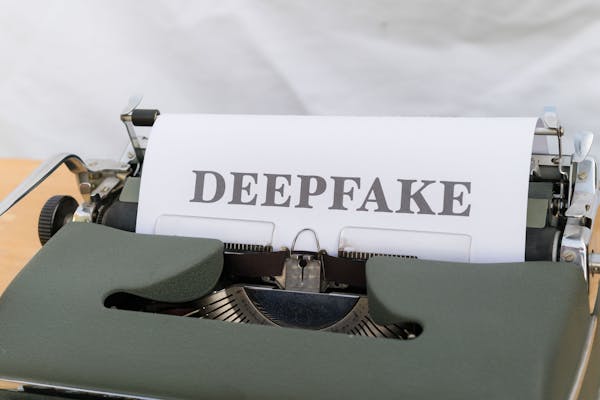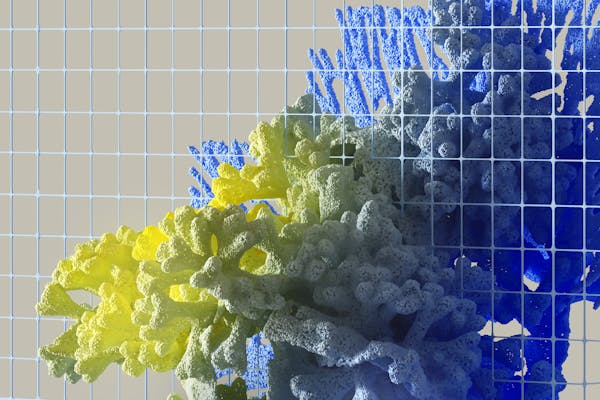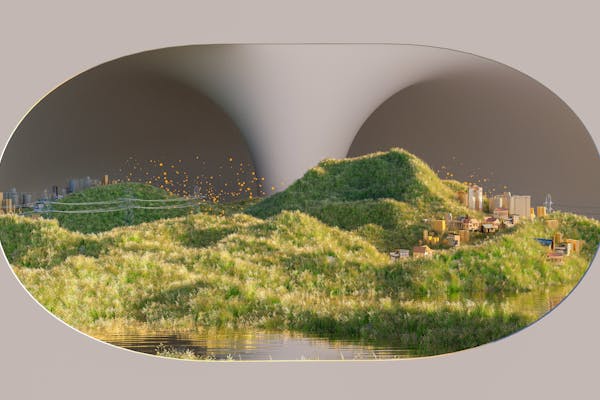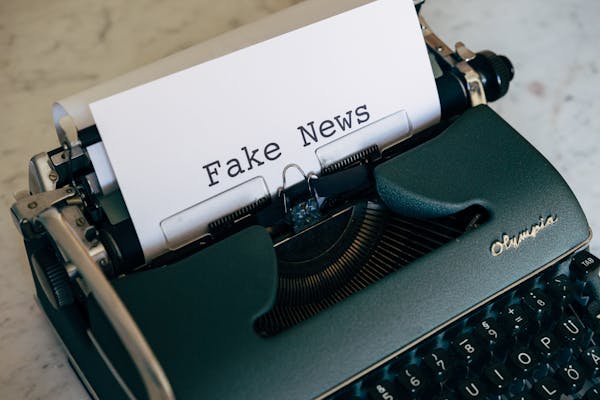Navigating the Age of Digital Manipulation
We are living in a time of rapid technological advancement, where artificial intelligence (AI) is reshaping industries, economies, and personal lives. One of the most fascinating—and at times alarming—outcomes of this AI revolution is synthetic media, a broad term encompassing any media generated or altered using algorithms. While synthetic media offers exciting possibilities in art, entertainment, education, and more, it has also given rise to one of the most controversial innovations of our time: deepfakes.

Deepfakes, a fusion of “deep learning” and “fake,” are hyper-realistic digital forgeries created using advanced AI techniques. These manipulated pieces of media can convincingly swap faces, alter voices, or generate entirely fabricated yet realistic videos and audio clips. Although deepfakes have beneficial uses in industries such as entertainment and education, their potential for misuse—particularly in disinformation, fraud, and the erosion of public trust in media—raises profound ethical and social questions.
This article explores the rise of synthetic media, the dangers of deepfakes, and provides actionable insights and tips on how to avoid deepfakes in an increasingly complex digital world.
Understanding Synthetic Media

What is Synthetic Media?
Synthetic media refers to any media—be it images, videos, text, or audio—that is either fully created or heavily modified by artificial intelligence algorithms. This technology leverages powerful machine learning models trained on massive datasets to generate media that is indistinguishable from the real thing. For example, AI can be trained on millions of images of human faces to generate new, highly realistic faces that don’t belong to any real person. This is the basis for many AI-powered applications, from generating synthetic art to creating virtual influencers.
The rise of synthetic media has introduced a host of new possibilities:
- Automated Creativity: AI-generated art, music, and text are expanding the boundaries of creativity. Algorithms can write poems, compose songs, and even create paintings in the style of famous artists.
- Digital Companions: Virtual influencers, avatars, and chatbots with AI-generated personalities and appearances are increasingly being used in marketing and entertainment.
- Virtual Production in Film: Filmmakers are using synthetic media to simulate dangerous stunts, de-age actors, or create entirely synthetic characters, such as CGI creatures or humanoids.
- Improved Communication: AI can generate lifelike voiceovers and translations, enabling more seamless communication across languages and cultures.
While these innovations enhance our creative and communicative capabilities, they also come with a downside: deepfakes, a particularly malicious form of synthetic media.
The Rise of Deepfakes
Deepfakes represent a specific type of synthetic media designed to deceive by using AI to create fake but realistic-looking or sounding media. The most popular form of deepfakes involves video manipulations where the face of one person is superimposed onto the body of another. However, deepfakes can also include audio forgeries, where an individual’s voice is replicated to say things they never actually said.
Deepfakes are created using Generative Adversarial Networks (GANs), a type of AI model where two neural networks—one acting as a generator and the other as a discriminator—work together. The generator produces fake content, and the discriminator evaluates its authenticity. Over time, the generator learns to create increasingly realistic content until it fools the discriminator, resulting in highly convincing deepfakes.
Despite their potential for fun and creativity, deepfakes pose a significant threat to individuals, institutions, and societies when used maliciously.
Positive Applications of Synthetic Media and Deepfakes

While deepfakes are often viewed negatively due to their association with misinformation and malicious intent, the technology also has numerous positive applications:
1. Entertainment and Art
AI-generated media is revolutionizing the entertainment industry. Filmmakers use AI to create deepfakes for visual effects, de-aging actors or bringing deceased actors back to life on screen. For instance, in the Star Wars series, CGI versions of actors who passed away were used to recreate characters from older films. Video games and virtual reality are also enhanced by AI-generated characters and settings, providing more immersive experiences for players.
2. Education and Training
Deepfakes can serve as powerful educational tools, simulating realistic situations for training purposes. For example, in medical education, deepfake videos could simulate surgeries, allowing students to learn without the risk associated with real-life procedures. Similarly, deepfake technology can recreate historical events or personalities, making history lessons more engaging and interactive.
3. Accessibility and Inclusivity
Synthetic media allows for more accessible and inclusive communication. AI can generate real-time translations and lifelike voiceovers, enabling smoother communication across language barriers. This can be especially helpful for people with disabilities, as synthetic media can create customized, accessible formats for those who are hearing or visually impaired.
4. Preservation of Cultural Heritage
Deepfakes can also be used to restore old and deteriorated films, bringing cultural heritage back to life. AI can colorize black-and-white footage, enhance the quality of old recordings, or even fill in missing frames from historically significant films.
5. Personal and Emotional Use
On a more personal level, synthetic media can be used for things like animating old family photos or creating personalized birthday messages. AI can also generate avatars of loved ones, allowing people to “interact” with deceased relatives in virtual spaces.
The Dark Side of Deepfakes

Despite these promising uses, deepfakes carry serious risks. The technology can be—and has been—used for malicious purposes, raising concerns about privacy, security, and the integrity of information.
1. Misinformation and Propaganda
One of the most alarming consequences of deepfakes is their potential to spread misinformation. Deepfakes are already being used in political campaigns and disinformation operations, where fabricated videos of political leaders making false statements or behaving inappropriately can have significant consequences. This type of manipulation could easily sway public opinion, undermine democratic processes, or even incite violence.
For instance, in 2018, a deepfake of President Barack Obama emerged in which he appeared to insult Donald Trump. Though this was created as part of an educational project on the dangers of deepfakes, it demonstrated how easily false information could be spread through this technology.
2. Personal Harm and Non-Consensual Pornography
One of the most insidious uses of deepfake technology is in non-consensual pornography. In numerous cases, women’s faces have been superimposed onto explicit videos without their consent. These videos are then distributed online, leading to serious emotional, psychological, and reputational harm. This type of abuse is not only a violation of privacy but also a severe form of digital harassment that is difficult to counteract due to the anonymity often afforded to the perpetrators.
3. Fraud and Identity Theft
Deepfakes can be used to carry out fraud, such as impersonating individuals to gain access to sensitive information. Criminals could create deepfake videos or audio clips of executives or family members requesting money transfers, gaining access to accounts, or stealing sensitive data. As deepfake technology improves, it becomes harder to differentiate between genuine and fake communications, posing significant risks to businesses and individuals alike.
4. Erosion of Trust in Media and Institutions
As deepfakes become more sophisticated, they could fundamentally erode trust in all forms of digital media. If the public can no longer differentiate between real and fake content, there will be an increase in skepticism and cynicism toward all media, potentially even genuine sources of information. This could result in a “boy who cried wolf” scenario, where people dismiss actual news as fake simply because they can no longer be sure of its authenticity.
This growing distrust in media and institutions could have serious social and political ramifications, weakening the foundations of democracy and reducing public confidence in journalism and governmental bodies.
5. Legal and Ethical Dilemmas
Deepfakes present a range of legal and ethical challenges. Current laws are often inadequate to address the harms caused by synthetic media, and courts around the world are grappling with questions of accountability, privacy, and freedom of expression. For instance, who is liable when a deepfake causes harm— the person who created it, the platform that distributed it, or the AI that generated it? Furthermore, how can we ensure that deepfakes are not used to infringe on personal privacy without infringing on artistic or satirical expression?
As lawmakers scramble to regulate deepfakes, the technology continues to advance faster than legal systems can keep up.
Tips on How to Avoid Deepfakes
With deepfakes becoming more accessible and realistic, it is critical to develop strategies for identifying and avoiding them. Here are some practical tips to help you navigate this landscape and avoid being deceived by deep fakes:
1. Be Skeptical of Sensational Content
Deepfakes often go viral because they present sensational or implausible content, such as a famous politician making an outrageous statement or a celebrity behaving in a shocking manner. If a video or audio clip seems too extreme or unexpected, take a moment to consider whether it could be manipulated. Use your judgment to critically evaluate the content rather than blindly accepting it.
2. Verify the Source
Always check the origin of the content. Deepfakes are more likely to be circulated on platforms that do not verify their sources. If a video is shared on social media by an unknown account, it’s important to investigate whether it has been reported by reputable news outlets or trusted sources. If legitimate news organizations aren’t covering the story, this may indicate that the content is fake or manipulated.
3. Use Deepfake Detection Tools
Several tools have been developed to detect deepfakes. While no tool is perfect, they can help spot subtle signs of manipulation. Here are some popular tools:
- Microsoft Video Authenticator: This tool analyzes video and photo content to assess whether it has been tampered with.
- Sensity AI: A platform that detects deepfakes and assesses their likelihood.
- Deepware Scanner: An app that scans videos for traces of deepfake technology.
These tools can help you gain insights into whether a piece of media has been manipulated, though they are most effective when combined with critical thinking.
4. Look for Subtle Tells
Although deepfakes are becoming more sophisticated, there are still some telltale signs that can reveal them. Pay close attention to details such as:
- Unnatural facial expressions or movements: Deepfakes sometimes fail to replicate natural movements or emotions.
- Inconsistent lighting: If the lighting on a subject’s face doesn’t match the environment, it could indicate manipulation.
- Blinking patterns: Some deepfake algorithms struggle to replicate realistic blinking.
- Audio mismatches: In deepfake videos, the audio can sometimes be slightly out of sync with the speaker’s lip movements.
By scrutinizing these visual and auditory cues, you can often identify deepfakes that might otherwise be convincing.
5. Cross-Reference Information
When in doubt, cross-reference the content with other reliable sources. If the information in the video is true, you will likely find it being reported by multiple reputable outlets. If the content only exists in a few places, especially if those sources are unverified or dubious, it may be a deepfake. Use established fact-checking platforms like Snopes, FactCheck.org, or PolitiFact to verify suspicious claims.
6. Stay Informed About Advances in Deepfake Technology
Deepfake technology is evolving rapidly, and so are the methods for detecting it. Stay updated on the latest developments in both deepfake creation and detection. By being aware of the most recent advancements, you can better protect yourself from falling victim to this emerging threat.
7. Use Two-Factor Authentication (2FA)
As deepfakes open the door to impersonation and identity theft, it’s crucial to take steps to secure your online accounts. Enabling two-factor authentication (2FA) adds an extra layer of security, making it more difficult for cybercriminals to access your accounts even if they use deepfakes to impersonate you or someone you know.
8. Raise Awareness and Educate Others
One of the most effective ways to combat the spread of deepfakes is by raising awareness about them. Educate your family, friends, and colleagues about the risks posed by deepfakes and the methods to detect them. Promoting digital literacy and encouraging critical thinking will help reduce the impact of deepfakes on society as a whole.
The Future of Synthetic Media and Deepfakes
As artificial intelligence continues to evolve, the capabilities of synthetic media will expand, making it even more challenging to distinguish between real and fake content. While this will unlock new opportunities for creativity, entertainment, and accessibility, it also brings heightened risks in terms of privacy, misinformation, and security.
To mitigate these risks, it will be critical for governments, tech companies, and civil society to collaborate on creating comprehensive regulations and detection tools. Public education campaigns that teach digital literacy and responsible media consumption will also be vital in helping individuals navigate this increasingly complex media landscape.
One possible future development is the creation of “deepfake detection certificates” for legitimate videos. Some experts predict that AI-driven authenticity markers will be embedded in real media to signal its legitimacy, much like digital watermarks or blockchain-based verification systems.
Synthetic media and deepfakes represent both a powerful tool and a potential weapon. While deepfakes have opened up new avenues for creativity, education, and entertainment, their misuse has led to significant ethical, legal, and social concerns. From spreading misinformation to committing identity theft, deepfakes have the potential to cause real-world harm if left unchecked.
However, by adopting a critical approach to the content we consume, employing detection tools, and following the tips on how to avoid deepfakes outlined in this article, we can safeguard ourselves against the dangers of manipulated media. As deepfakes continue to evolve, staying informed and vigilant will be essential to maintaining trust in the digital world.





